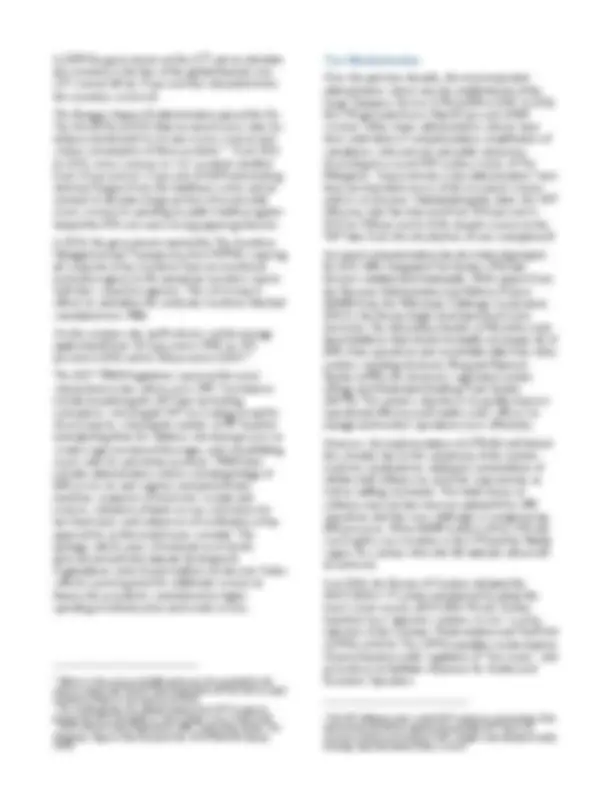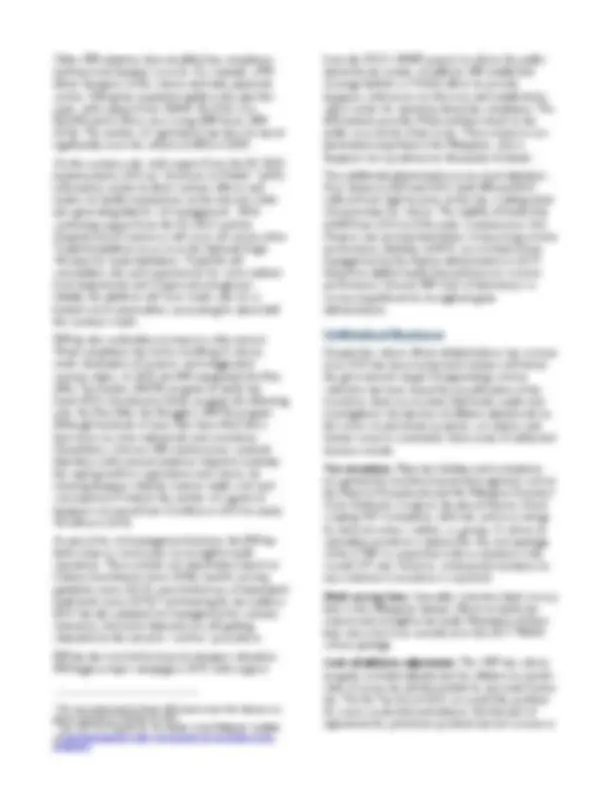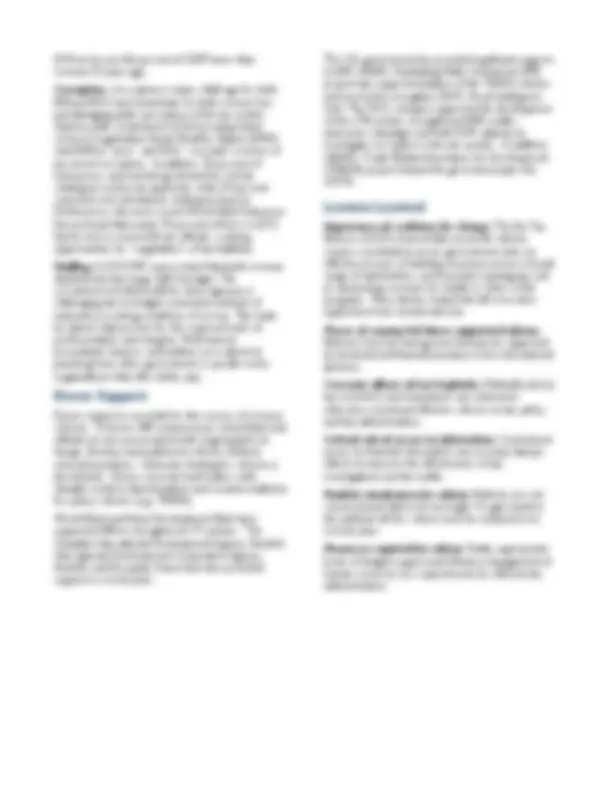





Study with the several resources on Docsity

Earn points by helping other students or get them with a premium plan


Prepare for your exams
Study with the several resources on Docsity

Earn points to download
Earn points by helping other students or get them with a premium plan
Community
Ask the community for help and clear up your study doubts
Discover the best universities in your country according to Docsity users
Free resources
Download our free guides on studying techniques, anxiety management strategies, and thesis advice from Docsity tutors
An in-depth analysis of the Philippines tax revenue trends from 1997 to 2016, highlighting key policy measures, reforms, and challenges. the decline in tax revenue as a percentage of GDP, the impact of tax administration and policy measures, and the role of vested interests in shaping tax policy. It also explores the importance of coordination, grassroots support, and innovative packaging in overcoming resistance to tax reforms.
Typology: Lecture notes
1 / 6

This page cannot be seen from the preview
Don't miss anything!




1
Between 1996 and 2016, the Philippines’ economy grew at an average of 4.8 percent per year, despite two major financial crises. Tax revenues, however, slipped from 15.4 percent of GDP in 1997 to just 11. percent in 2004 (Figure 1). Although some tax administration and policy measures boosted the tax ratio somewhat in the intervening years, the tax ratio in 2016 remained well below the 1997 peak, in part due to expansions of tax breaks and exemptions and constraints to effective tax administration and audit.
Over this period, economic growth was supported by prudent macroeconomic policies marked by relatively low budget deficits. Under President Rodrigo Duterte since June 2016, political pressure has been growing for greater spending on infrastructure and social services. To fund this increase in priority spending on infrastructure and social services, the Duterte government has been promoting a Comprehensive Tax Reform Program, including the Tax Reform for Acceleration and Inclusion (TRAIN) actwhich was signed into law on December 19, 2017.
The Philippines’ experience offers several valuable lessons to tax-reform advocates. First, overcoming vested interests requires coordination across government, active grassroots support, and innovative packaging, such as earmarking a portion of revenues for social programs. Second, reforms must be homegrown but international partners can provide vital support to design and implement reforms. Third, politically driven tax loopholes or exemptions can undermine otherwise effective reforms. Fourth, constraints on access to information, such as stringent bank secrecy laws, hamper efforts to strengthen tax investigations and audits. Fifth, political will for reform must be sustained over several years for major reforms to gain traction.
In 2016, Philippines central government revenue amounted to 15.2 percent of GDP, including 13. percent derived from taxation.^2 Both ratios are low by regional standards (Figure 2).
The tax ratio peaked at 15.4 percent of GDP in 1997. That same year, the government passed the Comprehensive Tax Reform Program (CTRP), but the Asian financial crisis knocked the tax yield down to 14.1 percent of GDP in 1998. When the economy recovered, the tax ratio Figure 1 Total and Tax Revenue, Select ASEAN Countries (% GDP), 2014
Source: IMF WoRLD Database; Philippines Government
(^1) This briefing note was prepared by Adrian Morrison based on a full length case study written by Bruce Bolnick and Pooja Singh https://pdf.usaid.gov/pdf_docs/PA00T5XZ.pdf
(^2) Statutory contributions to Social Security are booked as off-budget revenue; these amounted to 2.4% of GDP in 2016.
continued to slide, bottoming out at 11.8 percent of GDP in 2004. This drop in revenue resulted from a proliferation of special-interest tax breaks, lower import duties in pursuit of trade liberalization, flaws in the design of the 1997 excise tax reform, and weak tax administration.
To plug the revenue gap, excise rates on alcohol and tobacco were adjusted in 2004 and the corporate income tax (CIT) and valued added tax rates increased. These measures boosted the tax ratio to 13.5 percent of GDP in 2007. The global financial crisis prompted the government to adopt tax cuts and the tax ratio fell to 12.1 percent in 2010—closing out more than a decade of “lost years” for DRM.
Since 2010, the ratio of tax revenue to GDP has rebounded by 1.6 percentage points (as of 2016) due to increasing incomes, the new Sin Tax Reform Law of 2012 and tax administration reforms to facilitate tax compliance. Even so, revenue has been weakened by special-interest tax preferences, leaving the tax ratio in 2016 well below the peak achieved in 1997.
As of 2016, the Bureau of Internal Revenue (BIR) accounted for 79 percent of total tax revenue, with the Bureau of Customs (BOC) collecting 20 percent and other offices 1 percent. The Large Taxpayers Service (LTS) collected more than 60 percent of BIR revenue. VAT, CIT and personal income tax (PIT) accounted for 27 percent, 17 percent, and 11 percent of revenue, respectively. Between 1997 and 2010, BIR collections plunged from 11.7 percent of GDP to just 9.1 percent, while BOC revenue slumped from 3. percent of GDP to 2.9 percent. Excise revenues declined precipitously, while income tax and import duties also fell (Figure 3). Import duties now account for only 3 percent of tax revenue due to the decline in merchandise imports and trade liberalization.
Since 2010, collection performance improved for all major taxes, except BOC taxes. However, tax collections were still falling short of the government’s targets, constraining goals of the Benigno Aquino administration (2010-16) to expand the government’s low level of spending on infrastructure and social services. To continue the effort to raise more revenue, the Duterte government has been promoting a new Comprehensive Tax Reform Program (CTRP), the first part of which was enacted, including the Tax Reform for Acceleration and Inclusion (TRAIN) Act in December 2017.
Over the past two decades, the government has pursued a series of tax policy measures and administrative reforms (see Figure 4). Policy reforms have been particularly challenging due to pressure on Congress from vested interests.^3
Tax Policy The Corazon Aquino administration initiated a tax reform program in 1986 to improve revenue yield, promote tax equity, reduce distortionary effects on employment and production, and improve compliance. The introduction of the VAT was the heart of the program, which replaced a complicated, inefficient array of indirect taxes. The administration also expanded tax incentives for investment promotion. Subsequent congresses further weakened the tax base through VAT exemptions, deferrals, and zero-ratings. Currently, more than 80 sectors, entities, or groups benefit from such preferences.^4
The next major policy initiative was the expansion of VAT coverage (the “EVAT”) in 1994 to include services. Although EVAT reduced exemptions, those provisions were challenged in court, and many exemptions were ultimately retained. In 1997, the Comprehensive Tax Reform Program (CTRP) was adopted. Principal features included a uniform PIT schedule for compensation, business, and professional incomes; a phased-in reduction of the CIT rate; and restructuring of the excise taxes on alcohol and petroleum products. Some features of the program, however, proved to be poorly designed. It failed to provide inflation adjustments to specific excise rates and created multiple tiers of excise rates that allowed manufacturers to minimize tax payments. This led to a steady decline in excise revenues from the mid-1990s through 2011. The 1997 reform also lacked inflation adjustments to the income tax brackets, with the result that many taxpayers have faced higher marginal tax rates over time simply attributable to inflation—a phenomenon referred to as “bracket creep.” To combat the revenue decline, the Revenue Mobilization Package of 2006 increased the CIT and VAT rates, abolished exemptions for petroleum and other energy products, and subjected certain services to VAT.
(^3) Unlike a parliamentary system, in which bills submitted by the prime minister are often ratified with few changes, in the Philippines presidential system, the Congress acts as an independent branch to review, amend, and approve policy measures. (^4) Jurado, Florida J. 2017. “Proposed Reforms on Value-Added Tax,” NTRC Tax Research Journal XXIX.3 (May-June): 12-64.
Other BIR initiatives have simplified tax compliance and improved taxpayer services. For example, eFPS allows taxpayers to file returns and make payments on-line. E-filing has expanded rapidly in the past few years, with support from USAID. By 2016, over 924,450 active eFilers were using eBIR forms (BIR 2016). The number of registrations has also increased significantly since the rollout of eREG in 2009.
On the customs side, with support from the EU, BOC implemented in 2012 an “electronic to Mobile” (e2M) information system to allow customs officers and traders to handle transactions via the internet, while also generating data for risk management. With continuing support from the EU, BOC and the Department of Commerce will soon roll out an online TradeNet platform to serve as the National Single Window for trade facilitation. TradeNet will consolidate rules and requirements for seven cabinet- level departments and 13 government agencies. Initially, the platform will cover trade rules for a limited set of commodities, accounting for about half the country’s trade.
BIR has also undertaken to improve enforcement. Weak compliance has led to non-filing of returns, under declaration of incomes, and exaggerated expense claims. In 2005, the BIR inaugurated the Run After Tax Evaders (RATE) program to tackle tax fraud. BOC introduced a similar program the following year, the Run After the Smugglers (RATS) program. Although hundreds of cases have been filed, there have been very few indictments and convictions. Nonetheless, a former BIR commissioner contends that these enforcement initiatives helped to motivate the rapid growth in registrations and returns, by showing taxpayers that tax evasion entails risks and consequences.9 Indeed, the number of registered taxpayers increased from 23 million in 2013 to nearly 30 million in 2016.
As part of its risk-management function, the BIR has taken steps in recent years to strengthen audit operations. These include risk classification based on industry benchmarks (since 2006), transfer pricing guidelines (since 2013), some limited use of automated audit tools (since 2015),^10 and training for tax auditors. BOC has also adopted risk management for customs clearances, but most shipments are still getting channeled to the intrusive “red line” procedures.
BIR has also worked to improve taxpayer education. BIR began a major campaign in 2014, with support
(^9) This was emphasized by former BIR Commissoner Kim Henares in a phone interview on October 22, 2017. (^10) See “BIR Tax Programs for Tax Evaders in the Philippines” available at http://taxacctgcenter.org/bir-tax-programs-for-tax-evaders-in-the- philippines/.
from the MCC’s RARP project, to inform the public about the tax system. In addition, BIR established eLounge facilities in 73 field offices to provide taxpayers with access to eServices and established a call-in center for questions about tax compliance. The BIR website provides FAQs and fact sheets to the public on a variety of tax issues. These measures are particularly important in the Philippines, where taxpayers are spread across thousands of islands. Two additional administrative issues merit attention. First, between 2000 and 2010, both BIR and BOC suffered from high turnover at the top, creating a lack of momentum for reform. The stability of leadership at BIR from 2010 to 2016 under Commissioner Kim Henares was an important factor in improving revenue performance. Similarly, at BOC, an overhaul of top management by the Aquino administration in 2013 helped to stabilize leadership and improve revenue performance. Second, BIR’s lack of autonomy is a serious impediment to strengthening tax administration.
Despite the reform efforts detailed above, tax revenue since 2010 has been modest and remains well below the government’s target. Disappointing revenue collection has been caused by a proliferation of tax incentives, bank secrecy laws that hinder audits and investigations, the absence of inflation adjustments to the excise on petroleum products, corruption, and human resource constraints. Some areas of unfinished business include:
Tax incentives. Many tax holidays and exemptions are granted by investment promotion agencies such as the Board of Investments and the Philippine Economic Zone Authority. Congress has passed dozens of acts creating VAT exemptions, deferrals, and zero-ratings for favored sectors, entities, or groups. A reform to rationalize incentives is planned for the next package of the CTRP, in conjunction with a reduction in the overall CIT rate. However, widespread resistance to any reduction in incentives is expected.
Bank secrecy laws. Unusually restrictive bank secrecy laws in the Philippines hamper efforts to tackle tax evasion and strengthen tax audit. Relaxation of these laws was a key issue considered in the 2017 TRAIN reform package. Lack of inflation adjustment. The 1997 tax reform program excluded adjustments for inflation to specific rates of excise tax and thresholds for personal income tax. The Sin Tax Act of 2012 corrected this problem for excise on alcohol and tobacco. But the lack of adjustment for petroleum products has led revenue in
2016 to be one full percent of GDP lower than revenue 20 years ago.
Corruption. Corruption is major challenge for both BIR and BOC and contributes to both revenue loss and damaging public perception of the tax system. Opinion polls conducted in 2016 by independent research organization Social Weather Station (SWS) rated BIR as “poor” and BOC “very bad” in terms of perceived corruption. In addition, 30 percent of enterprises reported being solicited for a bribe relating to income tax payments, while 24 percent reported such solicitations relating to imports. Furthermore, the most recent World Bank Enterprise Survey found that nearly 74 percent of firms in 2015 had to visit or meet with tax officials, creating opportunities for “negotiation” of tax liabilities.
Staffing. A 2015 IMF report noted that both revenue departments face large staff shortages. The recruitment of skilled staff for these agencies is challenging due to budget constraints and lack of autonomy in setting conditions of service. This leads to salaries that are low for the required levels of professionalism and integrity. Well-trained accountants, lawyers, and auditors are subject to poaching from other government or private sector organizations that offer better pay.
Donor support is essential for the success of revenue reforms. A former BIR commissioner noted that local officials are too preoccupied with ongoing tasks to design, develop, and implement reforms without external assistance. Domestic funding for reforms is also limited. Donors provide local leaders with valuable evidence-based analysis and recommendations for policy reforms (e.g., TRAIN).
World Bank and Asian Development Bank have supported BIR to strengthen its IT systems. The Canadian International Development Agency, Swedish International Development Cooperation Agency, AusAID, and European Union have also provided support in recent years.
The U.S. government has provided significant support to BIR. USAID’s Facilitating Public Investment (FPI) project has supported analysis of the TRAIN reforms and worked to strengthen DOF’s Fiscal Intelligence Unit. The MCC compact supported the development of the eTIS system, strengthened BIR’s public awareness campaign, and built DOF capacity to investigate corruption in the tax system. In addition, USAID’s Trade-Related Assistance for Development (TRADE) project helped the government pass the CMTA.
Importance of coalitions for change. The Sin Tax Reform of 2012 showed that successful reforms require coordination across government units, an effective process of building consensus across a broad range of stakeholders, and innovative packaging, such as earmarking revenues for health or other social programs. These factors helped the bill overcome opposition from vested interests.
Power of country-led donor supported reforms. Reforms must be homegrown but may be supported by technical and financial assistance from international partners. Corrosive effects of tax loopholes. Politically-driven tax incentives and exemptions can undermine otherwise sound and effective reforms to tax policy and tax administration. Critical role of access to information. Constrained access to financial information can seriously hamper efforts to improve the effectiveness of tax investigations and tax audits. Realistic timeframes for reform. Reforms are not conceived and delivered overnight. To gain traction, the political will for reform must be sustained over several years. Resources required for reform. Finally, appropriate levels of budget support and effective management of human resources are requirements for efficient tax administration.